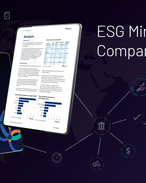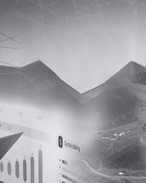A month after buying Barrick’s Plutonic mine for $25 million, Northern Star yesterday announced the $75 million acquisition of 100% of Kanowna Belle and Barrick’s 50-51% stake in the East Kundana joint venture mines.
It comes after Barrick sold the Yilgarn South operations – comprising the Darlot, Lawlers and Granny Smith mines – to Gold Fields for $US270 million ($A308.3 million) late last year.
The sales and other divestments have netted Barrick about $850 million over the past six months.
Speaking at a CIBC conference in Canada overnight, Barrick CEO Jamie Sokalsky said the selling off of non-core, short-life assets was about creating a stronger and leaner company.
“This isn’t just about raising cash, it’s about optimising the portfolio and focusing on our large assets,” he said.
The sales leave Barrick with just two Australian mines – the low-cost Cowal mine in New South Wales and its 50% stake in Kalgoorlie Consolidated Gold Mines, operator of the Super Pit in Kalgoorlie.
In the region, the company also has the Porgera mine in Papua New Guinea.
“Porgera is still a higher-cost mine for us,” Sokalsky said.
But rather than divestment, the focus at Porgera is on a new mine plan.
The divested Australian operations account for around 700,000 ounces of annual gold production.
Sokalsky confirmed that Barrick met its original full-year production guidance of 7-7.4 million ounces of gold, as well as copper, cost and capital expenditure guidance, but acknowledged that as a result of the sales, 2014 production would be lower.
He added that Barrick had been through a seachange over the past two years, with the move to a focus on free cashflow rather than ounces.
Part of that change is calculating reserves and life of mine plans at $1100 an ounce.
“We’ve taken a more conservative approach,” Sokalsky said.
“[Reserves] will be lower.”
Sokalsky noted that last year the company said a drop in reserve price from $1500 to $1200/oz would result in a 10% change in reserves.
“Ultimately, that move to $1100 an ounce is more conservative,” he said.
“If we’re going to be true to our discussion about being disciplined on capital and returns and we use a lower gold price, we are exchanging ounces for higher returns and that will impact our reserves.
Barrick will report its full results next week.
CAPITAL MARKETS
Barrick continues to back away from Australia
ONCE considered a key region for Barrick Gold, yesterday's sale of the Kanowna Belle and East Kun...

Mining Company ESG Index: Benchmarking the Future of Sustainable Mining
The Mining Company ESG Index report provides an in-depth evaluation of ESG performance of 61 of the world's largest mining companies. Using a robust framework, it assesses each company across 9 meticulously weighted indicators within 6 essential pillars.

Mining Journal Intelligence Global Leadership Report 2024: Net Zero
Gain insights into decarbonisation trends and strategies from interviews with 20+ top mining executives and experts plus an industrywide survey.

Mining Journal Intelligence Project Pipeline Handbook 2024
View our 50 top mining projects, handpicked using a unique, objective selection process from a database of 450+ global assets.

MiningNews.net Research Report 2024
Access a multi-pronged tool to identify critical risks and opportunities in Australia’s mining industry.





















